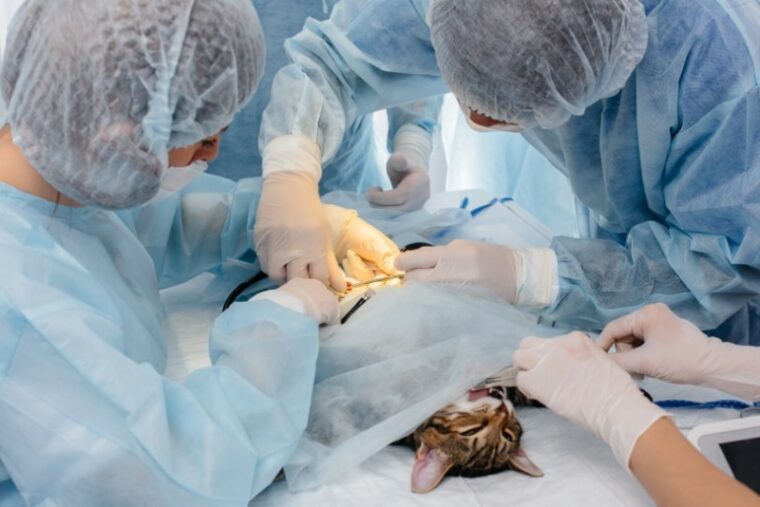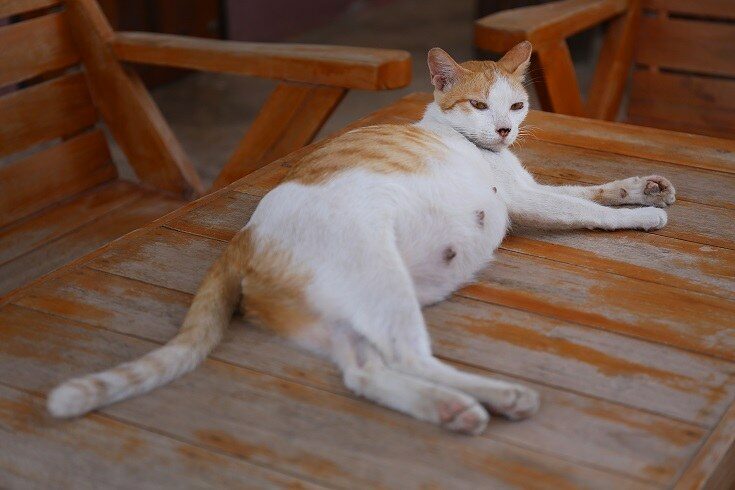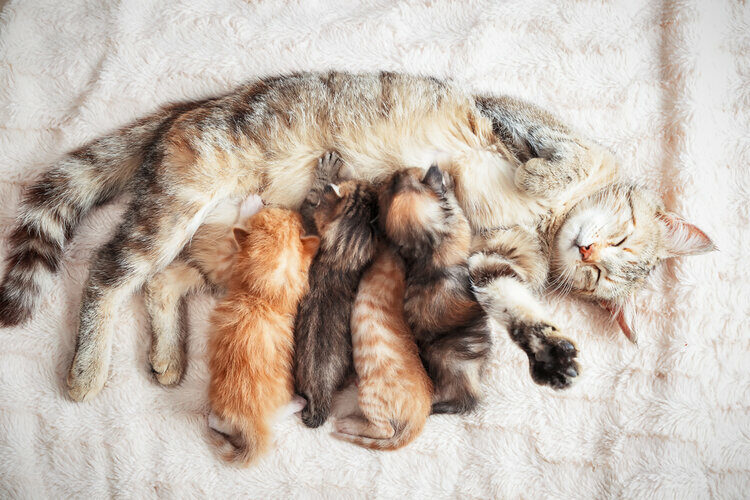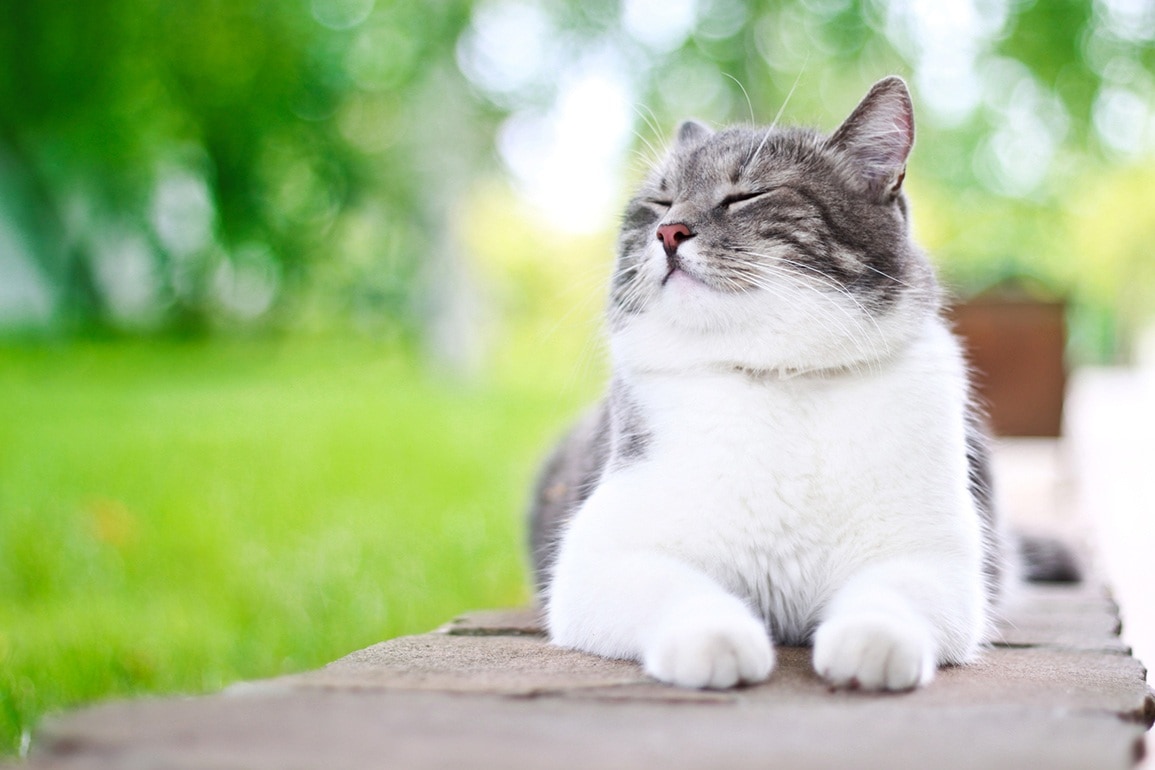
Click to Skip Ahead
Even though having a litter of kittens is a heart-warming experience, there are already so many homeless cats in the world, right? If your kitty had an accidental pregnancy or you found a stray in need, you probably want to help prevent future pregnancies.
So, if you’re curious just how soon you can get your female fixed after she has given birth, generally cats can be spayed 4 to 6 weeks after giving birth.
We’re going to go over all of the details so you can schedule an appointment with your veterinarian at the appropriate time.
Female Cat Heat Cycles
Female cats reach sexual maturity between 4 and 6 months of age. Once they are in this stage, they will repeatedly go into heat every 2 to 3 weeks during the breeding season until they are spayed.
Because pregnancy is such a huge possibility, most vets recommend that you spay your female before their first heat cycle. Not only can this prevent unwanted pregnancy, but it can also reduce the likelihood of behavioral changes and spraying or marking in the home.
The heat cycle is split up into four stages: proestrus, estrus, diestrus and anestrus or interestrus.1

Proestrus
Proestrus is the period before active estrus during which your cat should start the classic behavioral changes associated with heat. You might notice them being more affectionate or vocal than usual. You might also find that some of them are downright overbearing, seeming to be almost in a frenzy. It may only last a day or two. Toms may be interested in her at this time but she will not be receptive to their advances.
Estrus
Your cat’s estrus cycle is the period of time when they are actively in heat. During this stage, these cats can become pregnant. The estrus cycle is the one responsible for all of the behavioral changes associated with the classic signs of the breeding season like incessant meowing, attempts to get out of the home, and of course, if they find a mate, they will be more than open to relations with them. Estrus is brought to an end often by ovulation which is stimulated by mating in cats. If she is not mated, estrus will last around 7 days on average.

Diestrus
Diestrus is the period after ovulation that lasts roughly 2 to 3 weeks if the mating was not successful. If the female is pregnant, she will deliver her litter within 69 to 64 days.
Anestrus
This is the period between heat cycles usually with reduced day length (October to December in the Northern Hemisphere).
Interoestrus
This is the time between heat cycles during the breeding season. If you choose to wait to get your female spayed, you can expect to go through this every 3 weeks. Even though the majority of females don’t bleed like some other mammals, including canines, their behavioral changes can create a relationship strain.
So, if your cat is currently pregnant or recently was, know that her heat cycles will kick back up again in no time, and you will have to deal with the same issues, including further unwanted pregnancies.
A Cat In Heat: The Signs
Although females can have a litter of kittens at any point in time in the year, they tend to be seasonal breeders, particularly showing signs of estrus in the spring and fall months.
If you’ve ever been around a female cat in heat, you know it. They are not in any way modest about it. Many people who see their female go into heat for the first time can concur that it’s almost like it’s not even the same cat.
Females in heat tend to get very lovable, and even overbearingly so. You might find them rubbing on just about anything they come across. They are constantly letting out new and unheard-of vocalizations during all hours of the day and night.
If you share your home with a cat in heat, it can be challenging due to the frequency of cycles and behavioral changes associated with it.
During a heat cycle, the more the female mates, the higher the chance of a successful pregnancy. During this time, if she has more than one sire, there can be multiple fathers to the kittens and her later.

Spaying a Pregnant Female
Spaying a pregnant female before she delivers her kittens is difficult for many people to consider, but we do acknowledge that it is a choice some people will make. The reality is that most vets are willing to fix a mother cat during gestation in certain situations.
Also, sometimes a vet is unaware that the cat is pregnant before starting the surgery. If they find out during surgery it is helpful to know your wishes in this event. They can close the surgical site and postpone the surgery until after the kittens are delivered or continue with the surgery.
There is increased risk to spaying whilst pregnant and your vet can discuss this with you.
Some vets do not feel comfortable performing a spay surgery if the cat could be pregnant over a certain time in gestation.
Spaying During Weaning
You do have the option to spay your cat when they are weaning their kittens. It isn’t advisable to perform this until the kittens are at least four weeks old.
By the time they reach this age, you can use kitten replacement formula and soft, moist kibble to eventually transition them to kibble kitten food.
Before 4 weeks of age, the mother’s mammary glands are full, making surgery difficult. That is why it is advisable to wait until the milk supply decreases slightly before scheduling the surgery.
If you plan to wean the kittens by hand, make sure that you are using the exact amounts of formula and cat food to make sure their bodies are getting the right amount of nutrients. This is a crucial point in their lives, creating strong bones, organs, and skin to live a healthy life.
A mother cat is designed to give their kittens the sustenance they need. So if you are going to act as the mother, you need to make sure to give them the proper nutrition. Veterinary guidance is advised.

Spaying After Weaning
Since cats can go into a heat cycle again 4 to 6 weeks after they give birth, you need to make sure they are secure. You wouldn’t want any escapes from the house resulting in a subsequent pregnancy.
If you plan to wait until the kittens are fully weaned, make the appointment in advance when the kittens turn 6 weeks old.
At this point, you can have the mother cat fixed and the kittens will have received the full amount of attention they require from their mother. Everyone wins.
The biggest downfall of choosing this option is ensuring no possibility of your cat getting pregnant again.
Pregnant/Nursing Feral Female: How Can You Help?
It isn’t uncommon, especially in the spring, to see a pregnant mother cat who doesn’t appear to have a home. Homelessness among felines is incredibly high, especially in very populated areas like large cities.
Luckily, animal shelters offer spay and neuter services for feral cats. It is an attempt to reduce homelessness among the feline population. Plus, many of them will take on the mother and kittens to place them in forever homes.
We recommend calling around to different local rescues and shelters to see what specific services are offered in your area. If you find a clinic that will accept feral cats, you can attempt to catch the mother to take her in.
Benefits of Spaying Your Cat
We think that you will find the benefits of spaying your cat far outweigh any drawbacks. Here is a brief rundown of the reasons spaying is a service to your female.
Spaying reduces the risks of some health issues
Spaying your female can reduce certain health risks related to some cancers. As the ovaries and uterus are removed during the spay it prevents the possibility of developing cancer of these organs and reduces the risk of mammary cancers. Also, uterine infections called pyometra and cystic ovaries are not possible.
Spaying improves life expectancy in most cases
Because spaying reduces the risk of some health issues, it can increase the life expectancy of your cat by 3.5 years. Who wouldn’t want to keep their feline around for a few more years?

Spaying stops heat cycles
Heat cycles happen roughly every three weeks during breeding season for the rest of your cat’s life once they hit sexual maturity.
Spaying could save you money on vet costs—in the long run
Spaying can reduce costs in the long run, it can save you money on special treatments or specific testing, on some illnesses and the likelihood of your cat suffering from some types of cancer.
Spaying might lead to positive behavioral changes
Just like anyone else, if you have hormones pulsing through your veins, you’re probably going to be a little more erratic than usual. Cats who are not fixed might be a little bit more unpredictable or aggressive and even just downright moody. Once you get your cat spayed, her temperament should even out.
Conclusion
So now you know that you can essentially get your cat fixed anytime after she has her litter of kittens, but waiting until at least 4-6 weeks after delivery is best for the mother and the kittens.
So, at least when it comes to opting for spaying surgery, you do have some wiggle room. But remember, if you choose to fix the mother before the kittens are fully weaned, you’re going to have to assume the responsibility yourselves, replacing their mother’s milk with the right nutrients.
See Also:
- My Cat Is Purring After Giving Birth, Is That Normal?
- How Soon Can Cats Get Pregnant After Having a Kitten? Vet Approved Facts
Featured Image Credit: Andrii Medvednikov, Shutterstock







